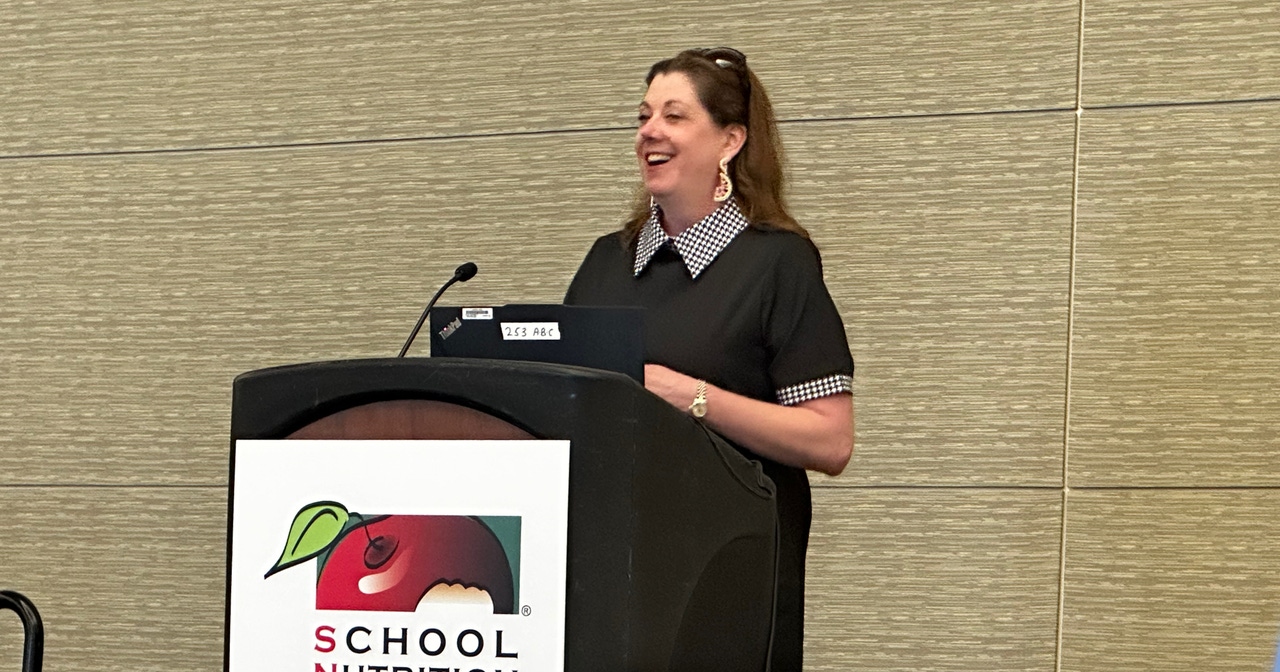Lactose-free milk pilot drives milk consumption at Cincinnati Public SchoolsLactose-free milk pilot drives milk consumption at Cincinnati Public Schools
During the pilot, overall milk purchases at the district went up along with meal participation.

At Cincinnati Public Schools in Cincinnati, Ohio, Child Nutrition Director Jessica Shelly noticed that milk consumption in the district was much lower than consumption of fruits and vegetables.
“We knew we had a gap; we knew we had an issue and that we had to find a solution,” Shelly shared with attendees at the School Nutrition Association’s (SNA) Annual National Conference (ANC) in Boston last week.
Shelly had a hunch that the low consumption of the beverage was due to many students not being able to digest lactose milk. She ended up partnering with the National Dairy Council to run a shelf stable lactose-free milk pilot this past school year that analyzed the effect the lactose-free beverage would have on milk consumption and overall school meal participation.
Preparing for the rollout
The initial pilot ran for 15 weeks starting last September and encompassed three different groups: four elementary schools that offered lactose free 1% white milk to students only if they had a parent or doctor’s note; six elementary schools that offered lactose free 1% chocolate milk to all students; and four secondary schools who offered lactose free 1% chocolate milk to all students.
Shelly worked with an existing distributor to have the shelf stable milk delivered to the district. As with any new product being rolled out, the team was trained on how to safely store and serve the new milk option and educated about why it was being offered.
Advertisements for the new milk options were included in newsletters sent to parents and posters, magnets and more were hung up in the cafeterias as well. Shelly also made sure that the school nurses were aware of the new lactose-free option as well.
“Sometimes a sick kid comes in and their stomach is hurting and [the nurses] kind of have an idea why,” said Shelly, adding that now the nurses could let the student know that lactose-free milk option was available.
Reviewing the results
While Shelly admitted to being skeptical about the new milk offering, she was a quick supporter after seeing the data.
“[In group one] my overall milk purchases went up by 7% and my meals increased by 2%,” said Shelly.
In groups 2 and 3 the numbers were even higher due to students not requiring a note to receive the lactose-free milk (milk purchases increased by over 16% compared to the rest of the district and meals increased by over 7%).
After seeing the initial data, the team decided to expand the pilot to 10 additional secondary schools in January where it was again met positively by students.
Based on the pilot’s success, all 69 schools in the district will begin serving a shelf stable lactose-free milk option this fall.
“The data was so definitive that this is something that our students believe and want it,” said Shelly
Elementary students will be offered non-flavored milk while secondary students will be offered a choice of flavored or unflavored. This is due to the U.S. Department of Agriculture’s new School Nutrition Standards which have stricter added sugar limits for younger students.
Shelly is excited that she can now offer a milk option for students who may have trouble drinking traditional milk and that less of the beverage is ending up in the trash.
Due to being a high free and reduced-price district coupled with the increase in meal participation, she can offer the beverage this fall without breaking the bank.
Shelly encourages other school nutrition professionals to look at their numbers and see if there’s a way they can work lactose-free milk options into their menus even in a limited capacity: “I understand this may not be something that's an option, but I would encourage you to figure out what are your financials and can you put the lactose-free option on your menu, at least maybe for lunch, or breakfast or dinner?"
About the Author
You May Also Like




.jpg?width=300&auto=webp&quality=80&disable=upscale)

